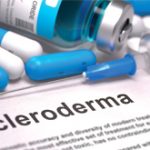Systemic sclerosis (SSc) is a rare disease affecting about 49,000 U.S. adults, and it is strongly associated with high levels of morbidity and mortality.1 Of the few available antifibrotic therapies, none is targeted for SSc. However, reason for optimism exists for antifibrotic treatments in early development and clinical trials, says Jörg H.W. Distler, MD, Heisenberg Professor…







